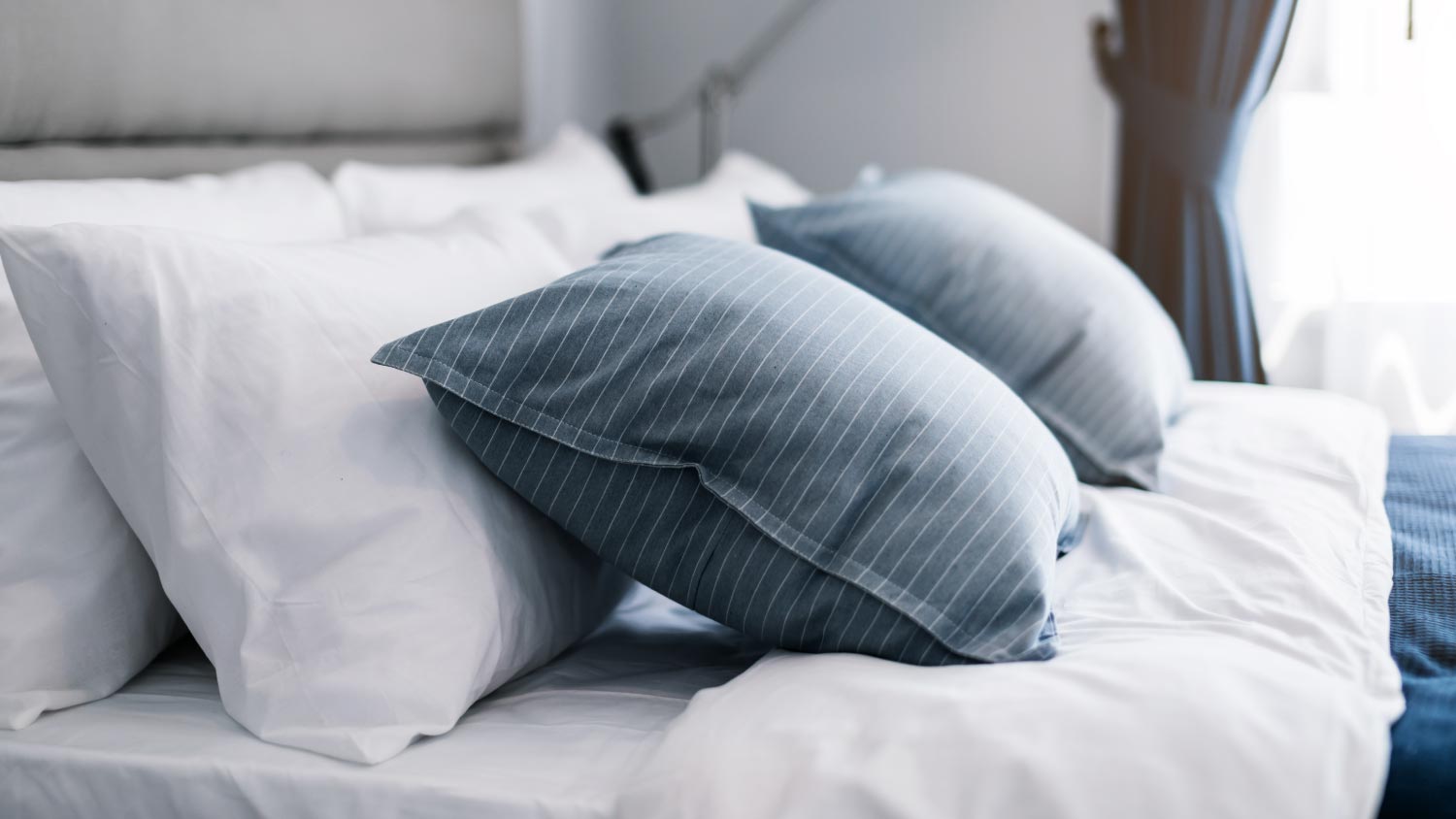10 Simple Ways to Reduce Allergens in Your Home
Kicking allergens to the curb can be as easy as following a few simple tips


Highlights
Year-round dusting and cleaning are important for any allergy sufferer.
Consider replacing your flooring to get some allergy relief.
Be sure to clean your bed regularly to reduce dust and other allergens.
Filtering your air may help reduce your allergy symptoms.
If your sneezes wake you up before your alarm clock every morning, you may be suffering from allergies. While pollen, grass and ragweed are common outdoor culprits, often, it’s the indoor allergens that are making you miserable. If resting on your comfy couch isn’t bringing you relief, dust mites, mold and pet dander hiding in your home may be to blame. However, there are many steps you can take to reduce allergens in your home and get the relief you need.
1. Clean Thoroughly
Spring cleaning can bring relief to any allergy sufferer, but to truly reduce symptoms, you’ll need to do a thorough cleaning often and year-round. Dusting overlooked areas like behind bookshelves, under the bed, on ceiling blades, and around air vents can make a huge difference. Don’t forget to wear a dust mask while cleaning, as loose dust can cause a flare-up of your symptoms.
2. Change Up Your Flooring
That vintage rug you scored at the estate sale may be a showstopper, but your itchy eyes may not agree. Hard-surface flooring is the best option for allergy sufferers, as it is much easier to clean and doesn’t harbor dust in the same way that fabric does. If you prefer the carpeted home aesthetic, go for a wool option rather than a heavy, high pile one.
3. Get Mattress and Pillow Covers

Your bedroom should be your sanctuary, but if you’re waking up with a runny nose, itchy eyes, and sore throat, that’s far from a relaxing haven. Mattresses and pillows can acquire a lot of dust mites, so purchasing hypoallergenic covers for them can help control those unwanted allergy offenders. You can also vacuum your mattress every so often for that extra protection.
4. Clean Your Windows and Blinds
Windows can accumulate a lot of dust, pet hair, and pollen from the outside, especially on a breezy spring day. Because they are a filter between you and your home, anything that collects on your windows will eventually make its way to the interior. Clean your windows, window sills, and blinds once a month using a microfiber cloth and all-purpose spray.
5. Groom Your Pet
Our furry friends are excellent companions and the best cuddle buddies. Though some pets are considered more hypoallergenic than others, no breed is completely allergen-free. It is recommended to brush your pet’s hair regularly to get rid of pet dander, especially if they have a long coat. You should also remember to wash your hands if your pet licks you, as allergens and germs are also found in their saliva.
6. Remove Shoes When Entering Your Home
Shoes pick up everything they touch, including dirt, pollen, mold, and dust. If you can, keep a shoe rack by the entrance to encourage everyone to leave their shoes at the door (that includes guests!). Having a pair of indoor slippers handy will not only keep your house cleaner but, you’ll have fewer scratches on your floors, which is a huge plus.
7. Filter Your Air
Your HVAC system allows your home to stay comfortable no matter what the weather is doing outside. To keep the air circulating in your home as clean as possible, be sure to change your furnace filters often. You can also add an air purifier to highly used rooms and purchase a HEPA (high-efficiency particulate air) filter for added protection.
8. Vacuum Often
Vacuuming isn’t only limited to carpets; you should be vacuuming couches, rugs, curtains, tile floor, and under the furniture at least twice a week, especially in high-traffic areas or where your pets hang out. A good vacuum can be a game-changer when it comes to eliminating dust, so be sure to do your research here.
9. Check for Mold
Kitchens and bathrooms are two of the most frequently used areas of your home. Because moisture gathers in these rooms, your surfaces and tiles can accumulate mold and mildew. Take care of any leaky roofs or visible mold issues before the problem gets worse. To prevent mold from happening in the first place, use a bathroom fan every time you shower and turn on the stove fan when cooking. Don’t leave wet sponges or towels lying around, and always clean up after each use.
10. Get Rid of Clutter
The truth is that the more stuff you have around in your home, the more allergens will stick around. We’ve all done the “clean around the clutter method,” but that doesn't stop dust and bacteria from growing. Ask yourself, “am I using this often?” If the answer is no, chances are you can get rid of those items or store them away properly elsewhere.

